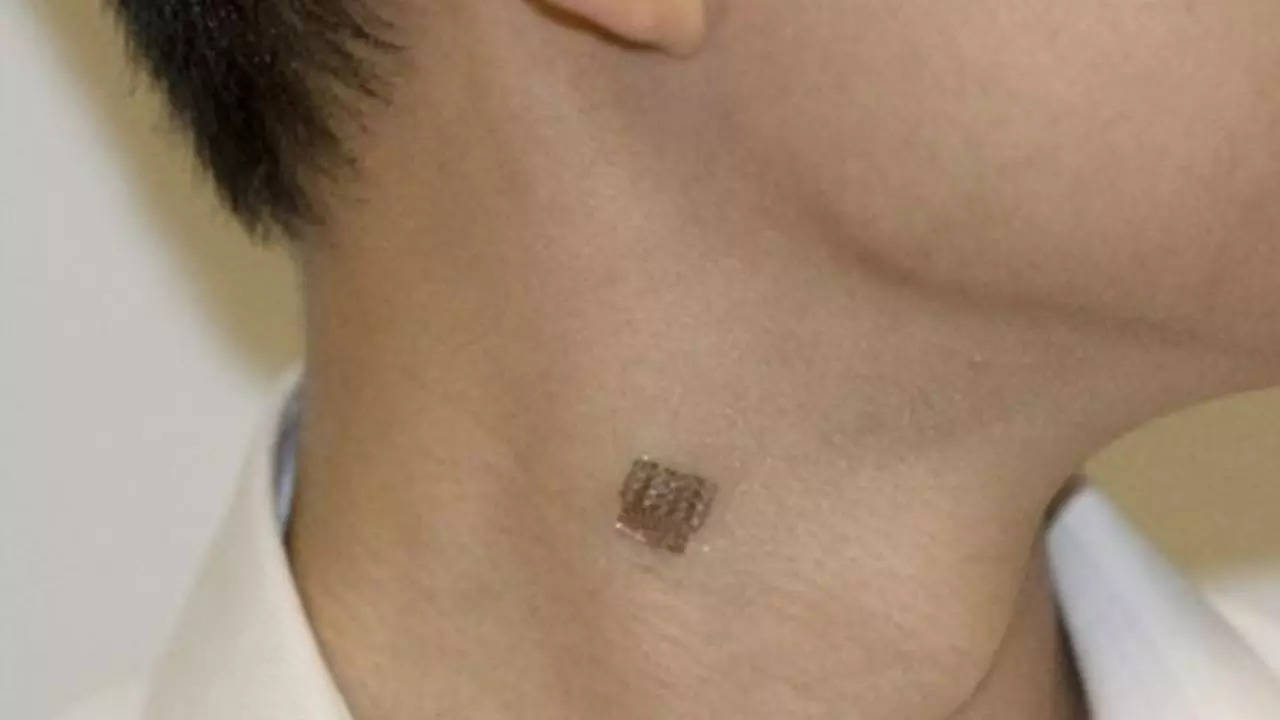Contents
-
news
-
Health
coming soon! Wearable skin patch to track your blood pressure, heart health
A new wearable ultrasound patch that monitors blood pressure in arteries not deep beneath the skin could help people detect heart problems earlier and more accurately. The patch was tested on a male subject, who wore it on the forearm, wrist, neck and leg. The tests were conducted while the subject was stationary and during exercise. Recordings collected with the patch were more consistent and accurate than recordings from a commercial tonometer.

The patch uses ultrasound, so it could potentially be used to non-invasively track other vital signs and physiological signals from locations inside the body.
A postage stamp-sized wearable patch that can continuously monitor blood pressure may soon help people manage their hypertension — a chronic medical condition where the pressure in your blood vessels is constantly elevated.
Researchers at the University of California, San Diego have developed a wearable ultrasound patch that has worked well in tests with more than 100 patients.
“Wearable devices have so far been limited to sensing signals at or just below the skin surface. But this is just seeing the tip of the iceberg,” said Sheng Xu, professor of nanoengineering at the UC San Diego Jacobs School of Engineering and corresponding author of the study. “By integrating ultrasound technology into wearable devices, we can begin to capture many other signals, biological events, and activities going on beneath the surface in a non-invasive manner.”
“We are adding a third dimension to the sensing range of wearable electronics,” Xu said.
Researchers who described their work in a paper published in the journal Nature Biomedical EngineeringSaid applications include real-time, continuous monitoring of blood pressure changes in patients with heart or lung disease, as well as in patients who are critically ill or undergoing surgery.
The patch uses ultrasound, so it could potentially be used to non-invasively track other vital signs and physiological signals from locations inside the body. According to experts, maintaining normal blood pressure – 120/80 is important in preventing many diseases – from heart disease and stroke to kidney problems, dementia and vision loss.
How does the patch work?
According to scientists, the soft and stretchy patch sticks to the skin and is worn on the arm. Tiny transducers inside send and receive ultrasound waves that track changes in the diameter of the blood vessels, and they are then converted into blood pressure values.
The researchers said the patch not only gives results equivalent to a standard blood pressure cuff, but is also equivalent to a highly accurate but invasive device inserted into an artery in intensive care units and operating rooms to continuously monitor pressure.
In trials of four patients who remained in intensive care after surgery and 21 patients who underwent cardiac catheterization, measurements from the patch were close to the arterial line. This shows its potential as a non-invasive option, the researchers said.
Why is the patch a convenient alternative to diagnostic methods?
Patch measures central blood pressure – which is different from blood pressure measured with an inflatable cuff tied around the upper arm, known as peripheral blood pressure. Central blood pressure is the pressure in the central blood vessels, which send blood directly from the heart to other major organs throughout the body. Doctors consider central blood pressure to be more accurate than peripheral blood pressure and also say that it is better at predicting heart disease.
Measuring central blood pressure is not usually done in routine examinations.
A non-invasive method exists, but it may not give consistently accurate readings and involves holding a pen-like probe known as a tonometer, which is held at the right angle and with the right amount of pressure for a good reading. Should be kept stable. Every time.
Researchers say the patch was tested on a male, who wore it on the arm, wrist, neck and leg. The tests were conducted while the subject was stationary and during exercise. Recordings collected with the patch were more consistent and accurate than recordings from a commercial tonometer. The patch recordings were also comparable to recordings collected with conventional ultrasound probes.
Get the latest news live on Times Now with breaking news and top headlines from around the world.


